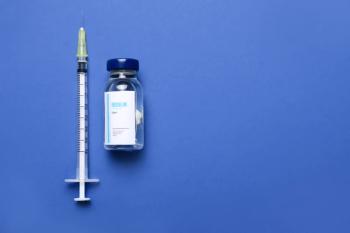
- Drug Topics November 2019
- Volume 163
- Issue 11
What Pharmacists Need to Know About Migraine
From medications to novel treatment methods, a guide to helping your migraine patients.
Migraine is a very common neurological disease-as the third most prevalent illness worldwide, it affects 39 million women and children in the US,
Every year in the US, $36 billion is spent on migraine-associated healthcare and lost productivity costs, and 157 million days of work are missed due to migraine. More than 4 million adults suffer from 15 or more migraine days monthly, known as chronic daily migraine. Medication overuse often contributes to chronic migraine. Chronic migraine is also associated with depression, anxiety, and sleep disturbance.
According to
Trending:
Drugs categorized as probably effective include the antidepressants venlafaxine and amitriptyline, and beta blockers atenolol or nadolol. Several other drugs are categorized as possibly effective, including carbamazepine, lisinopril, and clonidine, among others.
Currently, four injectable drugs are available for prevention, including BOTOX and monoclonal antibodies. BOTOX (onabotulinumtoxinA) is approved for chronic migraine with a recommended total dose of 155 units.
Another migraine drug, lasmiditan (Reyvow, Eli Lilly), was approved last month. Lasmiditan tablets were approved for acute (active/short-term) treatment of migraine with or without aura in adults. The most common side effects are dizziness, fatigue, paresthesia, and sedation. The drug may cause driving impairment; patients are advised not to drive within eight hours of taking the medication.
Monoclonal antibodies are approved for episodic and chronic migraine and may be promising in patients who have failed prior preventive treatments; three are currently available with another, eptinezumab, in the pipeline. All three are administered subcutaneously.
Emgality
- (galcanezumab-gnlm)
- 240 mg loading dose, followed by monthly doses of 120 mg.
Aimovig
- (erenumab-aooe)
- available in 2 doses (70 mg and 140 mg, either can be used as a starting dose), given once monthly.
Ajovy
- (fremanezumab-vfrm)
- dosed as 225 mg monthly or 675 mg every 3 months.
An acute migraine should be treated immediately. For a mild/moderate attack, NSAIDs, acetaminophen, or combination drugs with caffeine (aspirin/acetaminophen/caffeine) can be used.
For a moderate/severe attack, or if the above treatment does not provide relief, triptans or dihydroergotamine are recommended.
The American Academy of Neurology does not recommend opioids or butalbital in the treatment of migraine,
Read More:
Patients regularly using medications for acute headache should be evaluated to ensure they are receiving preventive treatment to help avoid development of medication overuse (rebound) headaches.
Patients who prefer nondrug therapies or have failed to respond to or cannot tolerate medications may be candidates for neuromodulation. Neuromodulation, which can be used as an acute or preventive treatment, uses an electric current or magnetic field to stimulate the nervous system. FDA-approved devices include Cefaly, Spring TMS, and gammaCore.
As accessible healthcare professionals, pharmacists can be a valuable resource to patients who suffer from migraine. In addition to counseling patients on medications, pharmacists can help patients with nonpharmacologic advice.
Articles in this issue
about 6 years ago
Train Staff on New Technology: Tips for Pharmacy Managersabout 6 years ago
The Vaping Crisis: Counseling Patientsabout 6 years ago
How Diabetes Care Is a Business Opportunityabout 6 years ago
How Pharmacists Can Help Rheumatoid Arthritis Patientsabout 6 years ago
Are You Ready for Pharmacy Inspection?about 6 years ago
Senior Medication Management: Helping a Vulnerable Populationabout 6 years ago
Vaccination Programs Bring Pharmacy Profitsabout 6 years ago
The Future of Pharmacy Chainsabout 6 years ago
Chains Implementing Tech to Help Track Opioid Misuseabout 6 years ago
CDC, Retailers Urge Flu Vaccine Due to Early SeasonNewsletter
Pharmacy practice is always changing. Stay ahead of the curve with the Drug Topics newsletter and get the latest drug information, industry trends, and patient care tips.

















































































































